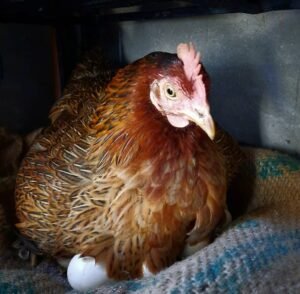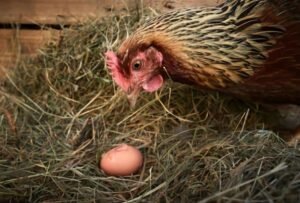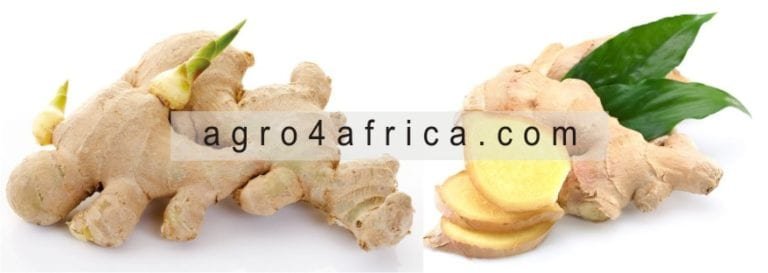Watermelon Companion Planting [The Best and the Worst Plants for Watermelon]

Have you been thinking of companion plants that you can grow together with your watermelons in order to maximize the use of your watermelon farm?
If so, then this article contains everything you need to know about watermelon companion planting.
In this article, you will learn about different pests that affect watermelon and the best companion plants to combat them.
Also, you will get to learn about other watermelon companion plants that tend to attract beneficial or helpful insects for pollination.
Guess what, most of the watermelon companion plants you will find in this article are very close to your reach and are very easy to grow.
So, if you are ready to learn more about watermelon companion planting and maximize the use of your farmland, then continue reading this article till the end.
How do I describe companion planting?
The concept of companion planting can be explained in the simple term of “plants helping plants perform better”.
These plants can successfully grow and produce their fruits on their own, but with the help of artificial chemicals like pesticides, herbicides, fertilizers and many more.
Yet, using companions in your farm will help you save time and the use of artificial chemicals to aid the growth of your plants.
If planted rightly, these companions serve as natural pesticides, nutrient suppliers, herbicides and also pollinators.

What to consider when planting watermelon companion plants?
It will be easier to grow this melon plant if you know the step by step cultivation guide to planting watermelon.
Aside from those steps, there are several things you need to consider before planting companions in your watermelon farm. They are:
1. Exposure to sunlight
In cultivating your watermelon, you must give greater attention to the spacing of the companion plants as well as the watermelon itself.
This is because your watermelon needs enough space to comfortably grow and spread its vine.
Watermelon can spread its vine between six to twenty feet away.
Meanwhile, this does not affect the taste of the watermelon but ensures better growth.
Yet, when watermelons are closely planted, they overlap.
This, therefore, makes the vines that are at the top to have sufficient measure of sunlight, while the vines below suffer from its lack.
For this reason, they choke themselves, leading to stunted growth.
Consequently, lack of sufficient sunlight leads to the death of the vines below.
Always remember that Its exposure to sunlight is priority.
Accordingly, you don’t need to plant them close to tall stem plants that will disrupt the penetration of sunlight.
Thus, it is a bad idea to grow your watermelon plants together with other crops that will suffocate them.
2. Pest repellents
When you don’t implement a pest control measure on your watermelon farm, pests may attack the farm and then result in poor watermelon yields.
However, you can naturally repel harmful plants from your watermelon farm by growing companion plants that are natural pest repellents.
3. Pollinators
This is very important because not all watermelon plant species have the ability to draw pollinators to themselves.
As a result, always have in mind to plant with your watermelons plants that attract pollinators like Bees.
These Bees happen to be cross pollinators, travelling from one species of watermelon and other melons to another.
The effect of this might be that your seedless species of watermelon will produce fruits with seeds and vice versa.
However, this is only possible when you have different species of watermelon on your farm.
What are the pests that attack watermelon?
1. Aphids
These are piercing insects that feed on the sap of a plant.
Sucking away the sweetness from the leaves of watermelon, they negatively affect the growth of the vine, alongside the fruit development.
The kind of aphid that attacks watermelon is the cotton/melon aphid.
They are tiny insects that are found under the leaves of watermelon.
The watermelon mosaic virus alongside other viruses is carried by aphids and transmitted to watermelon.
It makes the leaves curl, turn yellow, wrinkle and wither.
2. Squash/Epilachna beetle
It is called the African melon ladybird when it becomes an adult.
They are carriers of squash mosaic virus.
At the same time, they feed on the leaves of watermelon, the stem and create holes in the fruit.
The leaves of the plant are subject to turn yellow, shrink, dry up and wither.
This can entirely destroy the young growing plant of watermelon.
3. Cucumber beetle
This is one of the major pests that attack watermelon.
Both the striped and the spotted beetle attack watermelons.
It has the ability to transmit a dangerous virus called bacteria wilt to the plant if not controlled.
The effect of the disease is wilting and death of the plant.
4. Thrips
This insect creates dark and rough spots on the leaves of the plant.
An adverse effect of the spot it creates when its number becomes much is the deformation of the leaves of watermelon.
It is a carrier of the tomato spotted wilt virus.
5. Flea beetles
These beetles are dark and shiny.
They eat through the leaves of watermelons and create holes on them.
The holes they create on plant leaves eventually slow and reduce the growth of the watermelon.
This pest can eventually destroy young growing plants if the damage it causes is harsh.
Though the older plants can manage its infestation, it can decrease the rate at which they grow.
6. Cutworms
These pests are always active at night and cover up themselves in the soil at the base of the plant during the day.
Also, they can hide themselves in plant debris.
This makes them present in the soil where watermelons are planted.
By hiding in the soil, they have the ability to cause severe damage to the seedlings of the plant.
The damage they cause in the soil is to cut the seedling from the seed line.
They also have the ability to eat holes into the watermelon fruit.
7. Cabbage loopers
These insects are caterpillars that have white lines on their body and are pale green in colour.
They create holes in the leaves of the plant and feed on the skin of the fruit, thereby damaging the plant growth.
Their eggs are either white or pale green and are laid close to the leaf margin on the lower surface of the leaf.
8. Spider mites
They are also sucking insects that create bronze dots on the watermelon fruit.
These pests are spider like in structure but are very small to notice.
They can be noticed by the webs they build on the plants.
Webs can be built over the fruit but they leave the fruits healthy and fit for consumption.
9. Root Knot Nematodes
These pests are roundworms that are tiny and colourless.
They live in in the soil and go into plant root seeking for comfortable tissues where they will finally reside.
The effect of their attack on plant roots are swelling of the root cells and their inability to soak up nutrients as well as water.
Consequently, this causes the vines and leaves of the plant to turn yellow for a while, after which, they wilt.
Due to these negative effects, the watermelon plants will begin to experience stunted growth.
At the end of the planting season, you might get disappointed by the level of poor yield you will have. That is if the plant survives the attack.
What are the companion plants that protect watermelon from pests?
You would not want your watermelon plant to be attacked by pest that causes damages that may not be repaired.
Also, you will want to grow a watermelon that is free from pesticides and other chemicals that are harmful to human health.
Therefore, you will like to know the plants that naturally fight against pests that transfer diseases.
These protective plants are:
1. Garlic
Garlic and other alliums like onions, chives, shallot and leeks are good companions for watermelon.
Aside from helping to improve the taste of vegetables and fruits, they also serve as natural pesticides for plants.
Particularly, they defend watermelons from flea beetles, aphids, and other harmful pests.
2. Dill
It is a strong repellent against squash beetles, spider mites, and aphids.
Although it is a repellent, it is one plant that can also help to improve the healthy state of your young plant.
You can grow this plant in a container and kept close to your farm, or it can be planted some distance away from your plants.
This is to prevent it from suppressing your plant.
3. Lamiaceae family
Plants like mint, spearmint and catnip belonging to this family are very effective pest repellent.
These plants are best known for their ability to repel aphids, spider mites, ants and flea beetles.
Though they can be very effective in repelling pests that causes damage to your watermelon plant, they can cause harm to your plant if not controlled.
It is best to be planted in a container and kept close to your farm.
That way, they will not be corrosive to your plant growth.
4. Corn
The corn plant, though tall, is one natural repellent of cucumber beetle.
This can be planted close to watermelons in a way that it will not provide shade for the watermelon.
In return, the spreading of the vines of watermelon will help prevent the growth of weeds around the corn.
Both plants happen to be beneficial to their selves.
5. Radishes
These plants are fast growing and are highly beneficial to the watermelon plant.
It can serve as a weed control plant and can be cultivated before your watermelon vines can spread.
They are very effective as a natural repellent to cucumber beetles.
Furthermore, they can serve as trap crops for flea beetles and protection against squash beetles.
6. Marigold
As a flower, this is one plant that can be grown as a companion in virtually every vegetable farm, including the watermelon.
In the watermelon farm, it is one of the natural repellent of cucumber beetle.
Not only does it repel cucumber beetles, but also attract hover flies which can manage aphids.
At the same time, its appealing scent also attracts other beneficial insects.
Again, its scent prevents harmful insects like the squash bugs from attacking the plant.
Its root substance is capable of destroying nematodes that cause adverse harm to the watermelon plant.
7. Tansy
Its toxin is very effective in keeping away squash beetles and flea beetles, as well as ants.
This plant can be invasive in your farm.
To prevent its harsh effect on your plants, it is best controlled when planted in containers and kept close to your farm.
8. Nasturtium
The Nasturtium is also one flower that serves as an excellent companion to vegetables.
It is also highly effective in repelling the cucumber beetle, squash beetle, as well as aphids when planted as a companion for watermelon.
Also, it attracts beneficial insects like bees to pollinate the plants.
What are the types of companion plants that attract insects for pollination?
Undoubtedly, we know that pollination process is necessary for fertilization which brings about the production of fruits.
The major insect that is needed by the watermelon plant for pollination is the Bee.
Some watermelon plants like the triploid/seedless watermelon variety do not have flowers that attract insects that pollinates.
This, therefore, calls for the need of pollinators which are beneficial insects to help move the pollen grains from the male flowers to the female flowers that are on the same plant.
So, the companions that helps in pollinating watermelon plants are:
1. Lavender
This flowering herb with its beautiful flowers and scent can be a good companion to your watermelon plant.
It can call to your plant pollinators, especially bees.
2. Borage
This plant is a three in one functional and beneficial plant for watermelons.
It functions as an attractant to pollinators, as a repellent to pests, and as a plant that supplies the needed nutrients to watermelons.
Firstly, their beautifully plated flowers attract pollinators like bees and wasps to the watermelon.
Secondly, as a repellent, they help protect the watermelon from cucumber beetles and squash beetles.
Thirdly, as a nutrient supplier, it helps watermelon with needed nutrients.
3. Oregano
Oregano is a flowering herb that is not just able to attract pollinators, but is also able to repel almost all pests in your farm.
Its lovely scent is appealing to a lot of beneficial pollinators like hoverflies and lacewings..
At the same time, its scent confuses certain pests that are harmful to the watermelon.
Similarly, this herb helps in the development of healthy plants, watermelon inclusive.
4. Mixed wildflowers
It is also important to plant some mixed wildflowers to your watermelon farm.
These flowers are very good at calling the attention of the needed bees for pollination.
What are the types of watermelon companion plants that add nutrients to the soil?
Here are the best companions to plant to ensure your watermelon gets the best of nutrients for a healthy growth:
1. Pole beans or Bush beans
Obviously, the soil needs nitrogen to produce effectively, and pole or bush beans are good plants that supply nitrogen to the soil.
You have to be cautious of how you plant your pole beans.
Do not let them cast shade on the watermelon plants.
You could make a trellis that will permit the free passage of sunlight on the watermelon plants.
Warning:
Even though beans can supply the nitrogen needed for your watermelons to grow properly it is still bad for them.
This is because they tend to attract harmful pests, like melon aphids, that attack watermelon plants, thereby causing harm to the farm.
So, you have to weigh your options and probably look for other means of enriching the soil.
2. Lamb quarters
Although weeds are meant to be cleared off the farm, this weed is highly beneficial when planted close to your watermelon farm.
It contains quite a number of needed minerals which the watermelon plant needs.
Also, it helps in developing the vigour of the melon fruit.
List of plants you should never grow with your watermelons
Clearly, so many plants when grown as watermelon companion can help in assuring a healthier growth in contrast with when planted alone.
Yet, there are others that you should never plant with your watermelons.
This is because they tend to harm the watermelons by attracting harmful pests or by suppressing the growth of the plants.
Some of the companion plants to avoid growing together with your watermelons are:
1. Cucurbit family
Watermelon plant should not be grown alongside its fellow cucurbit plants.
This is because they all attract similar kinds of pest.
At the same time, they are also plants that need enough space to be grown.
This will lead to making the watermelon uncomfortable as it needs enough space to spread its vine and grow healthy.
These plants include Cucumbers, summer and winter squash, zucchini, Pumpkins.
Most importantly, avoid planting watermelon with other melon plants.
Also note that they may cross pollinate if planted with watermelon, thereby making the fruit of the plants to be different from the species that was planted.
2. Potato
This plant needs enough space to also spread its vine, therefore causing both the potato and the watermelon to compete for space.
If you insist on planting potato with your watermelon, then you will need to lift the potato before the watermelon grows properly.
Doing this may lead to causing damages to the watermelon and other companion plants.
This plant also has the ability to attract to the watermelon plant the cotton/melon aphid.
Therefore, planting it close to your watermelon will cause huge damage.
3. Tomato
These plants are known to attract certain species of aphid that does not affect the watermelon.
Yet, they also need space to grow and might give shade to the watermelon plant, thereby disrupting the passage of sunlight to the plant.
If they occupy space, then they make the pests, as well as diseases easily transferable.
4. Aster and Roses family
Flowers that are members of the aster family, alongside roses catch the attention of huge number of several aphid species.
If planted close to the watermelon plant, they are liable to cause severe damage to the plant.
These aphids can comfortably transfer from these flowers and feast on watermelons, leaving them malnourished and possibly, death.
5. Walnut and shagbark hickory tree
You may decide to plant the watermelon plant close to a walnut or a shagbark hickory tree, but this is highly risky.
The juglone which is very toxic to vegetables and produced by the branches, roots, nuts and leaves of both trees can cause stunted growth to the watermelon and also prevent fruit development.
Watermelon plants can manage the effect of juglone more than any other vegetable, but this toxic substance will still negatively affect the plant.
In the same way, the toxin makes the plant experience stunted growth and poor seed growth.
Although the walnut tree produces a larger amount of this toxin, always plant your watermelon and other vegetables far from the roots of these trees.
Summary
For your watermelon to grow healthy with matured and well nourishing fruits, you will need to plant them in a condition favourable enough for its growth.
A well planned farm of watermelon and its companions should have one or more plants that will be strategically planted to prevent pest infestation, attract beneficial pollinators and nutrient suppliers.
This will save you a lot when talking about cost of purchasing chemicals and other resources that may be needed for the growth of your watermelon.
It is important to keep in mind the pests that these companions attract and what they perform.
This way, you will not put your farm at risk of planting one companion that has a beneficial attribute, but its presence in the farm will only cause problems.
If you are sure you have it all planned out, then you are ready to plant.
References;
- 12 Best Chicken breeds for Eggs – chicken breeds for eggs
- When Do Chickens Start Laying Eggs Regularly?
- How Many Eggs Does A Chicken Lay In A Week?
- Fermenting chicken feed – The definitive guide
- 10 Sure Ways To Stop Chickens from Eating Their Eggs [+Bonus]
- 6 Best Chicken Egg Incubators for Chicken Eggs and Other Birds












Thanks for the informative give on how to maximix watermelon farm with companion plant. It’s very helpful thannk you.
You are welcome. Good luck to you.